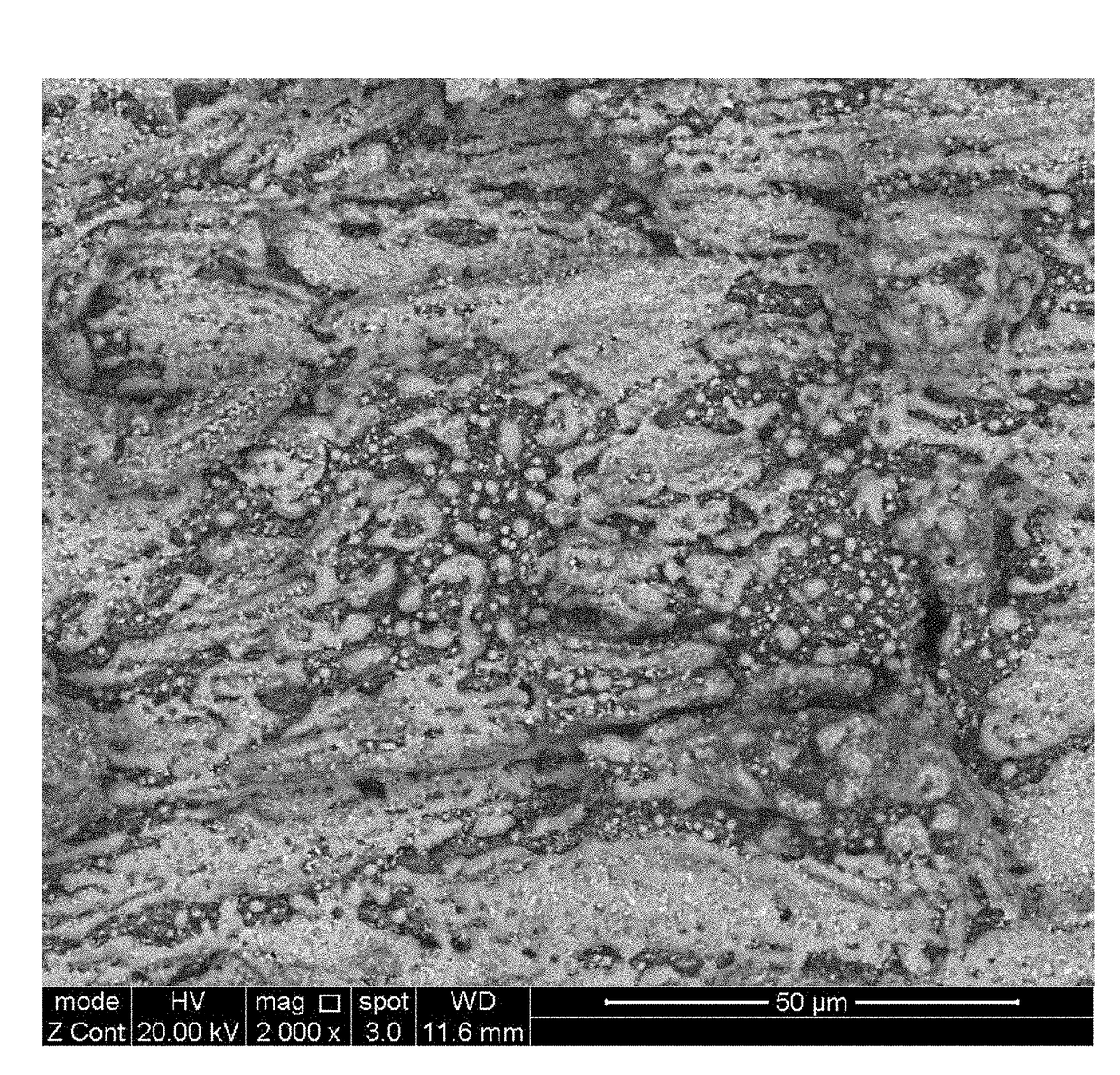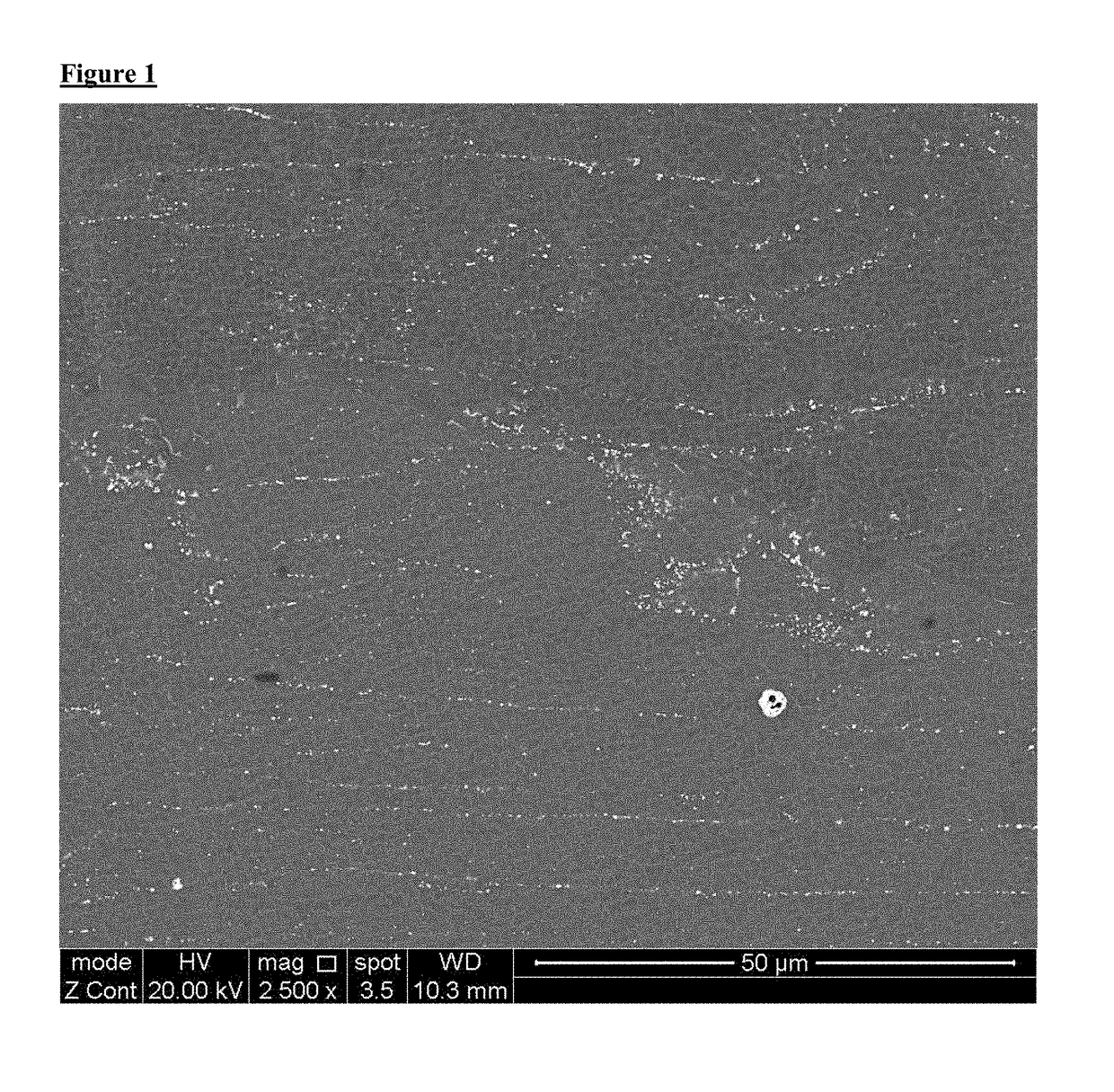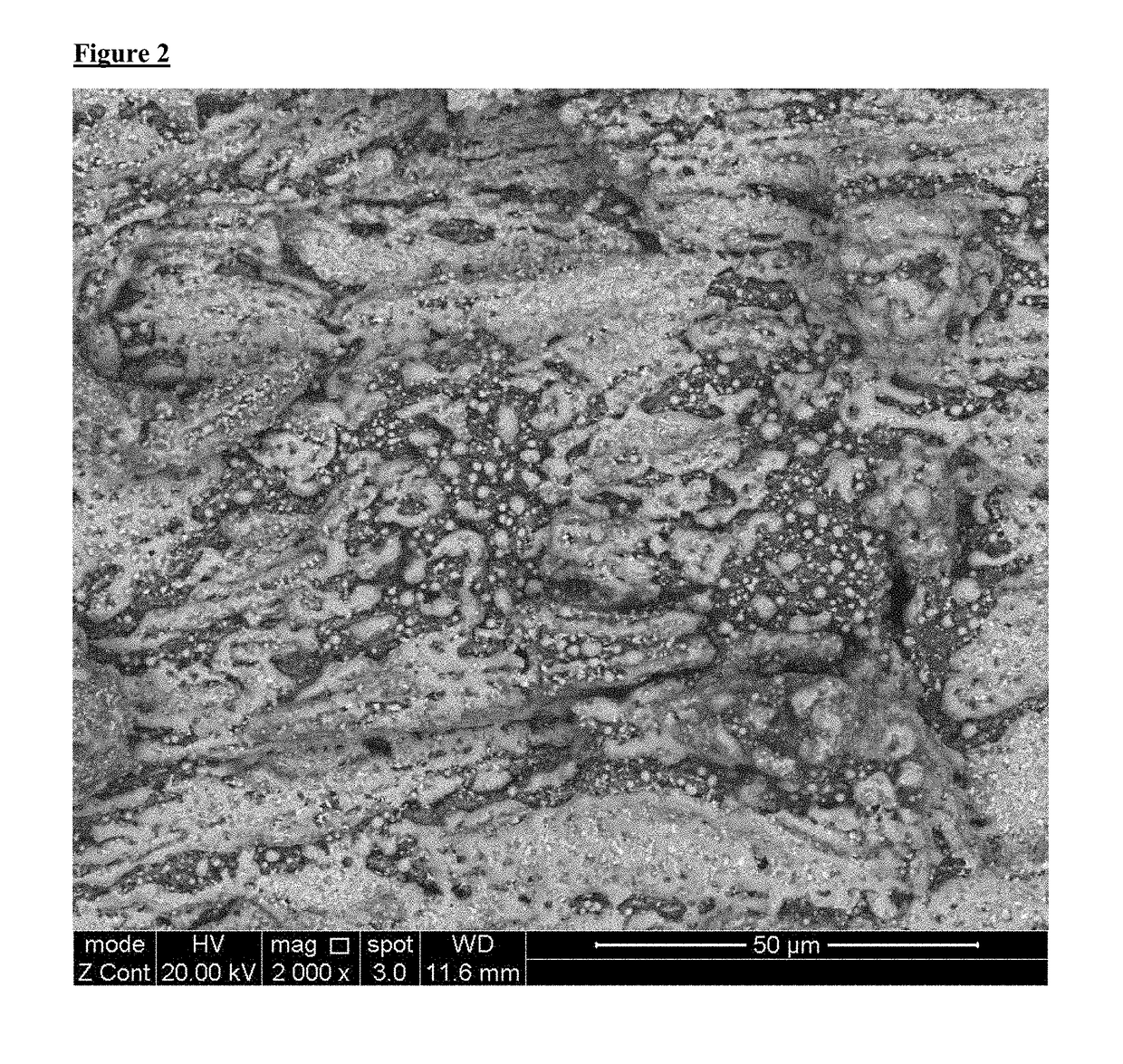Nickel-base superalloy and use thereof
a technology of superalloy and nickel-base, which is applied in the field of nickel-base superalloy, can solve the problems of strain age cracking, difficult welding of superalloys above this limit, and difficult weld of superalloys
- Summary
- Abstract
- Description
- Claims
- Application Information
AI Technical Summary
Benefits of technology
Problems solved by technology
Method used
Image
Examples
Embodiment Construction
[0032]The present disclosure provides a novel modified version of the known nickel-base superalloy CM247LC. The modifications are selected to improve the ductility of articles and structures that are produced from the alloy, namely to reduce the tendency of the articles and structures to crack, in comparison to CM247LC. Particular manufacturing methods for metal articles and structures that may suitably use the nickel-base superalloy of the present disclosure include powder-based additive manufacturing or directed energy deposition (DED) additive manufacturing processes.
[0033]A particular combination of modifications which the present inventors have found to give useful results in terms of substantially restricting cracking without compromising strength is generally the following:[0034]reducing the content of Hf from about 1.4 wt % in CM247LC to no more than about 0.05 wt % of the alloy[0035]reducing the content of C from about 0.07 wt % in CM247LC to the range of about 0.005 to abo...
PUM
| Property | Measurement | Unit |
|---|---|---|
| temperatures | aaaaa | aaaaa |
| temperatures | aaaaa | aaaaa |
| size distribution | aaaaa | aaaaa |
Abstract
Description
Claims
Application Information
 Login to View More
Login to View More - R&D
- Intellectual Property
- Life Sciences
- Materials
- Tech Scout
- Unparalleled Data Quality
- Higher Quality Content
- 60% Fewer Hallucinations
Browse by: Latest US Patents, China's latest patents, Technical Efficacy Thesaurus, Application Domain, Technology Topic, Popular Technical Reports.
© 2025 PatSnap. All rights reserved.Legal|Privacy policy|Modern Slavery Act Transparency Statement|Sitemap|About US| Contact US: help@patsnap.com



